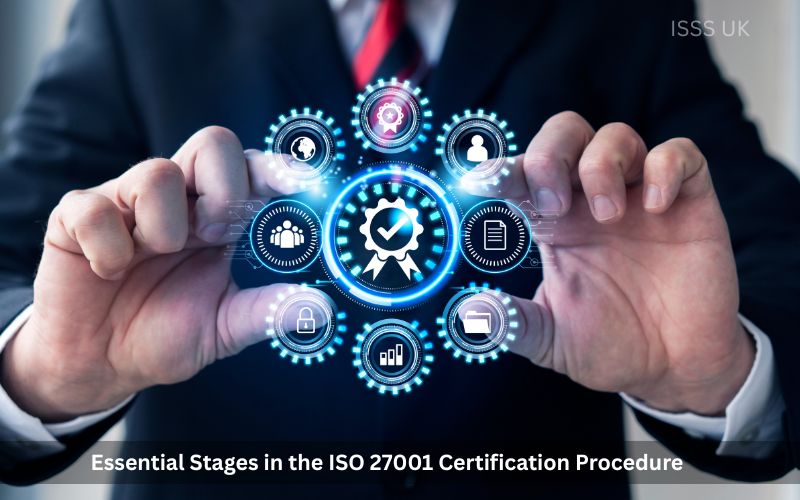In today’s data-driven world, organizations face growing pressure to safeguard sensitive information. ISO 27001 certification is the globally recognized standard for information security management systems (ISMS). Achieving this certification not only enhances your organization’s security posture but also boosts customer confidence and regulatory compliance.
In this article, we’ll walk you through the essential stages in the ISO 27001 certification procedure, helping you understand what to expect and how to prepare.
🔍 What Is ISO 27001 Certification?
ISO/IEC 27001 is an international standard that outlines the requirements for establishing, implementing, maintaining, and continually improving an ISMS. It provides a systematic approach to managing sensitive data, ensuring it remains secure—whether it’s digital, paper-based, or in the cloud.
📋 Key Benefits of ISO 27001 Certification
Before diving into the steps, here’s why businesses pursue ISO 27001 certification:
- Demonstrates commitment to information security
- Meets legal and regulatory requirements
- Improves risk management
- Enhances business reputation and trust
- Facilitates international business opportunities
🚀 Essential Stages in the ISO 27001 Certification Procedure
1. 🧩 Gap Analysis and Initial Assessment
Start by conducting a gap analysis to compare your current security practices with ISO 27001 requirements.
Key actions:
- Identify areas of non-compliance
- Understand the scope of your ISMS
- Create a roadmap for implementation
2. 🗂️ Define the ISMS Scope
Clarify which areas of your business the ISMS will cover—this can include:
- Business units
- Physical locations
- IT systems
- Third-party services
A clearly defined scope prevents misunderstandings and ensures focused compliance efforts.
3. 🔍 Conduct a Risk Assessment
Risk management is the heart of ISO 27001. Identify and evaluate information security risks based on:
- Potential threats and vulnerabilities
- Impact and likelihood
- Mitigation strategies
4. 🏗️ Implement Security Controls
With your risks identified, implement the appropriate controls from ISO 27001 Annex A to mitigate them. These may include:
- Access controls
- Data encryption
- Incident response protocols
- Physical security measures
- Employee awareness training
5. 📑 Develop Documentation and Policies
ISO 27001 requires thorough documentation, including:
- Information security policy
- Risk assessment and treatment plan
- Statement of Applicability (SoA)
- Internal audit plan
- Procedures and work instructions
6. 🔁 Conduct Internal Audits
Before undergoing an external audit, conduct internal audits to:
- Verify compliance with ISO 27001
- Identify non-conformities
- Implement corrective actions
Internal audits should be objective and performed by trained personnel not involved in the audited processes.
7. 🏢 Management Review
Top management must regularly review the ISMS to ensure:
- Strategic alignment
- Effective resource allocation
- Continual improvement
This review demonstrates leadership commitment—an essential requirement for certification.
8. 📋 Stage 1 Audit – Document Review
The certification body conducts a Stage 1 Audit to evaluate your ISMS documentation and readiness.
Key focus areas:
- Scope of the ISMS
- Risk assessment methodology
- Policy documentation
- Internal audit results
9. ✅ Stage 2 Audit – Main Certification Audit
In the Stage 2 Audit, the auditors verify the actual implementation and effectiveness of your ISMS.
They assess:
- Compliance with ISO 27001 controls
- Employee understanding and involvement
- Incident response procedures
- Evidence of continual improvement
If successful, the organization is recommended for certification.
10. 🏆 Certification Issuance
Upon passing the Stage 2 audit, you’ll receive your ISO 27001 certificate, valid for three years. It confirms your organization meets the highest international standards for information security.
11. 🔄 Surveillance Audits & Recertification
To maintain certification:
- Annual surveillance audits are conducted by the certifying body
- A recertification audit is required every three years
These audits ensure your ISMS remains effective and up-to-date.
📌 Final Thoughts
Achieving ISO 27001 certification is a strategic investment in your organization’s security, reputation, and future growth. By following the structured stages outlined above, your business can not only meet compliance requirements but also build lasting trust with customers, partners, and regulators.
Want to streamline your ISO 27001 journey? Join Our ISO 27001 Lead Implementer training.


